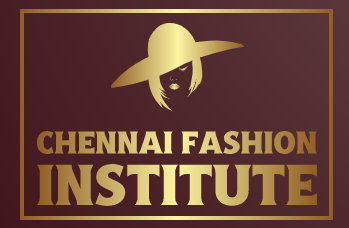Master Fashion Designing Fundamentals: The fashion industry pulsates with creativity and innovation. Yet, at its core, lies a strong foundation of fundamental principles. For aspiring fashion designers, grasping these fundamentals is the crucial first step on a thrilling journey. Chennai Fashion Institute, a leading institute dedicated to nurturing creative minds, presents a comprehensive guide to mastering fashion design fundamentals.
Master Fashion Designing Fundamentals: A Comprehensive Guide – Chennai Fashion Institute
Understanding the Design Process: From Inspiration to Creation
Master Fashion Designing Fundamentals: Fashion design is not simply about sketching beautiful clothes. It’s a meticulous process that transforms ideas into tangible garments. Here’s a breakdown of the key stages:
- Concept Development: The journey begins with inspiration. This could be sparked by anything – a cultural phenomenon, a historical period, a piece of art, or even a personal experience.
- Research and Trend Analysis: A thorough understanding of current trends and consumer preferences is vital.
- Sketching and Illustration: Sketches are the visual language of fashion designers. Using a variety of techniques like croquis (fashion figure templates) and flat sketches, designers translate their concepts onto paper, exploring different silhouettes, details, and proportions.
- Fabric Selection: The right fabric breathes life into a design. Designers must consider factors like weight, drape, texture, and suitability for the intended garment during fabric selection.
- Pattern Making and Draping: Patterns are the blueprints for garments. Designers either work with pre-existing patterns or meticulously create their own, ensuring precise fit and functionality. Draping allows designers to experiment with fabric on a three-dimensional form, refining the design and fit before actual construction begins.
- Sample Making and Construction: The first physical representation of the design comes to life through sample making. Muslins (rough prototypes) are made to test the fit and silhouette, followed by a final, refined sample using the chosen fabric.
- Quality Control and Finishing Touches: Even the most meticulous process requires a keen eye for detail. Quality control ensures the finished garment adheres to the design specifications and is free of imperfections. Finishing touches like buttons, zippers, and embellishments elevate the garment and add a touch of personality.
- Presentation and Portfolio Building: The final step involves showcasing your creations. Professional photoshoots, fashion shows, and a well-curated portfolio can be instrumental in attracting clients and launching a successful career.
Essential Skills for Every Fashion Designer
Beyond the design process, mastering specific skills empowers fashion designers to translate their vision into reality. Here are some crucial areas to focus on:
- Drawing and Illustration: The ability to translate ideas into visual representations is essential. Hone your sketching skills, learn various illustration techniques, and explore digital design tools.
- Fabric Knowledge: Understanding different fabrics, their properties, and suitability for specific garments is key. Learn about weaves, textures, weights, and how these factors impact the final product.
- Pattern Making and Draping: Mastering pattern making allows you to create structured garments. Draping offers creative freedom to experiment with form and fit.
- Construction Techniques: Knowing how garments are constructed is vital. Learn basic sewing techniques, garment assembly processes, and different finishing methods.
- Trend Analysis and Forecasting: Stay attuned to the ever-evolving fashion landscape. Learn how to analyze trends, forecast upcoming styles, and identify target markets.
- Computer-Aided Design (CAD): Technology is increasingly integrated into fashion design. Proficiency in CAD software allows for digital sketching, pattern making, and creating technical illustrations.
Exploring the Design Spectrum: Fashion’s Diverse Branches
The fashion world encompasses a vast array of specialties. As you develop your skills, consider exploring areas that resonate with your personal style and interests:
- Women’s Wear: Design clothing for women, from casual everyday wear to formal evening gowns and everything in between.
- Men’s Wear: Focus on designing apparel for men, catering to various styles and demographics.
- Accessories: Accessories like handbags, shoes, jewelry, and scarves can be a designer’s playground for creativity and experimentation.
- Activewear and Sportswear: Design functional yet stylish clothing for fitness enthusiasts and athletes.
- Children’s Wear: Create playful and comfortable clothing for children, keeping safety and age-appropriateness in mind.
- Costume Design: Design costumes for theatrical productions, films, or historical reenactments.
- Haute Couture: Immerse yourself in the world of high fashion, creating bespoke garments for discerning clientele.
Unveiling the Mystery: Frequently Asked Questions (FAQs) on Fashion Design Fundamentals
While a natural eye for style is valuable, formal training equips you with the technical skills and knowledge to translate your vision into reality.
A sketchbook, pencils, and drawing materials are fundamental for capturing your ideas. Fabric swatches, a measuring tape, and basic sewing tools will be helpful as you delve deeper into garment construction.
Your portfolio is your calling card, so invest time and effort in creating a curated collection of your best work.
Yes, there is a distinction. Fashion designers create the clothing itself, from conceptualization to construction. Fashion stylists, on the other hand, curate outfits using existing garments and accessories. While both professions contribute to the fashion industry, they involve different skillsets and career paths.
The fashion industry is dynamic and competitive. Develop a strong work ethic, be open to learning and experimentation, and refine your skills continuously. Build a network of contacts, attend industry events, and showcase your work at every opportunity. Most importantly, never lose sight of your passion and creativity – they are the driving force behind a successful fashion design career.
Read More

